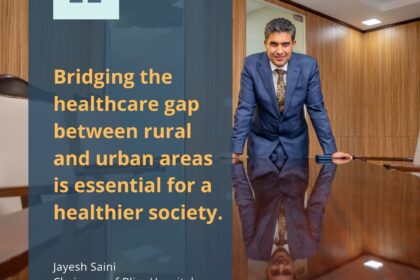Interfaces with Intention: Making Digital Tools Feel Human
As Kenya’s digital health systems expand—from teleconsultation to remote diagnostics—the spotlight has largely remained on access, efficiency, and scalability. But a new question is gaining urgency: Are these tools being designed for real humans, not just ideal users?
Empathy in digital healthcare doesn’t stop at bedside manner. It begins in the interface—in how apps greet users, how chatbots interpret emotions, and how culturally relevant language guides a patient through a complex healthcare journey.
In the case of private networks like Bliss Healthcare and Lifecare Hospitals, digital transformation has been more than just a backend overhaul. It has included deliberate, human-centric redesigns of their digital touchpoints to ensure accessibility, warmth, and trust—especially for patients unfamiliar with or anxious about digital systems.
The Problem: Cold Tech, Warmer Expectations
Too often, digital platforms in healthcare feel transactional. Click here. Upload this. Wait for response.
This may work in e-commerce. But in health? It risks alienating the very people the systems aim to serve.
For example, early user testing within Bliss’s mobile app revealed a consistent pain point: older patients struggled to navigate the platform, not due to lack of tech literacy, but because the tone felt robotic and instructions lacked emotional clarity. The interface didn’t feel like a guide—it felt like a gatekeeper.
This prompted a complete UX rethink—grounded in empathy.
Designing for Trust: Lessons from Bliss and Lifecare
Across Lifecare and Bliss platforms, several intentional shifts have emerged that offer a blueprint for human-centered digital health:
1. Conversational Chatbots that Reflect Cultural Nuance
Bliss Healthcare rolled out a Swahili-integrated chatbot designed not just to answer questions, but to do so in a tone that mirrored the politeness and empathy expected in in-person consultations.
- Instead of “Invalid input,” users now see “Let’s try that again together.”
- Instead of “Your symptoms do not match a known category,” users are prompted: “We’re not quite sure. Would you like to speak to a nurse?”
The bot isn’t just efficient. It’s comforting.
2. Visual Simplicity, Not Technical Density
Lifecare Hospitals revamped its online booking interface to reduce steps, add color-coded categories (like maternal care, dental, pediatrics), and integrate pictograms for low-literacy users. Feedback from patients in Kisumu and Eldoret suggested that these design choices significantly improved comfort with the platform.
3. Inclusive Design for Accessibility
Bliss platforms introduced features such as:
- Voice-based navigation for visually impaired users.
- Simplified language toggle for patients with low literacy.
- Offline functionality for areas with unstable networks.
These aren’t just UX features—they’re ethical decisions.
The Emotional Journey Is Part of the Clinical Journey
Digital tools aren’t just solving for symptoms—they’re accompanying patients through fear, uncertainty, and hope.
This insight drove a redesign of Lifecare’s appointment reminders. Instead of generic texts, patients now receive:
This message carries a human tone. It anticipates the anxiety of the unknown. And it has reduced appointment no-shows by a significant margin, according to internal monitoring.
Bridging the Empathy Gap Through UX
UX is now a core pillar of patient trust. And in countries like Kenya—where digital divides and health inequities intersect—interface design is not cosmetic. It’s clinical.
In Jayesh Saini–backed systems, UX teams are working hand-in-hand with frontline staff to continuously test, improve, and humanize the journey. This includes:
- Storyboarding the patient’s full emotional arc, not just the transaction.
- Translating medical instructions into local dialects.
- Using avatars, testimonials, and audio cues to build rapport.
When patients say, “I understood the app,” they’re also saying, “I feel safe here.”
Moving Forward: Intention as Infrastructure
As Kenya’s health sector races ahead in digitization, the next frontier will not be faster apps—it will be more thoughtful ones.
Interfaces built with intention can close trust gaps faster than policy announcements. They can comfort as well as inform. And they can turn passive users into engaged patients—especially in underserved communities where healthcare has long felt impersonal or out of reach.
The private sector—led by digital innovators like Bliss Healthcare, Lifecare Hospitals, and leaders such as Jayesh Saini—is showing what’s possible when empathy and tech evolve together.
In Kenya’s rapidly evolving healthcare sector, a quiet philosophical shift is underway. Private hospitals, once viewed primarily as profit-driven enterprises, are increasingly embracing a dual mission: to remain financially sustainable while delivering measurable social value. At the forefront of this transformation is a new wave of healthcare leaders who understand that long-term success must be built not just on financial statements, but on trust, accessibility, and equity.
This balance—between running a viable business and serving the public good—is not accidental. It is the result of intentional leadership, embedded values, and institutional strategies that prioritize impact as much as income. One of the most illustrative models of this philosophy is the approach taken by Lifecare Hospitals, part of a broader network of Saini-led ventures that are reframing what it means to be a responsible private healthcare provider in Africa.
The Core Belief: Sustainability Begins with Service
For leaders like Jayesh Saini, the private sector’s role in healthcare is not limited to filling gaps left by government systems. It is about designing systems that are resilient, inclusive, and aligned with the long-term needs of society. This requires more than operational efficiency—it demands a shift in philosophy.
Lifecare Hospitals, which operates across key regions such as Bungoma, Migori, Kikuyu, Meru, Mlolongo, and Eldoret, exemplifies this thinking. While each hospital is fully equipped with modern diagnostics, specialty services, and emergency care, the emphasis is not only on infrastructure—it’s on access. Fee structures are designed to be affordable, partnerships are formed with county governments, and care models are shaped by the needs of each community.
This blend of private execution with public-minded goals reflects a broader leadership principle: healthcare should never be an exclusive service. It must scale with dignity and reach, not just revenue.
Designing Impact-Oriented Healthcare
The operational backbone of socially responsible private healthcare lies in systems that track not just volume, but value. Across Lifecare’s network, leaders have implemented performance-based protocols that measure community outreach, chronic care follow-up, maternal health improvements, and diagnostic coverage across counties.
This strategic approach allows the private sector to speak the language of public health while maintaining business viability. For example, by integrating outpatient programs with nutrition and wellness education, hospitals reduce future readmissions and foster long-term relationships with patients. This is not just good healthcare—it’s good economics.
The same principle guides Bliss Healthcare, the outpatient arm of the broader network. With over 59 clinics across 37 counties, Bliss uses tech-enabled consultations, mobile pharmacy services, and chronic disease monitoring to reach underserved populations—often at a fraction of the cost of traditional models. These efforts are not charity. They are calculated, repeatable, and scalable innovations rooted in a philosophy of accessible excellence.


